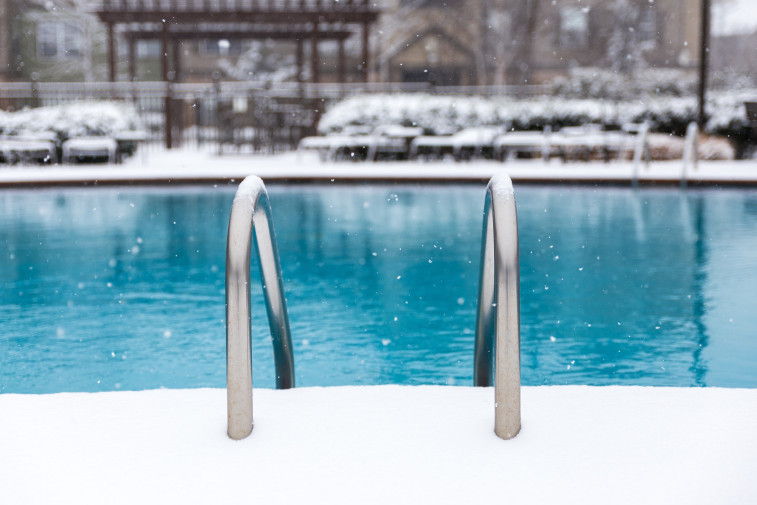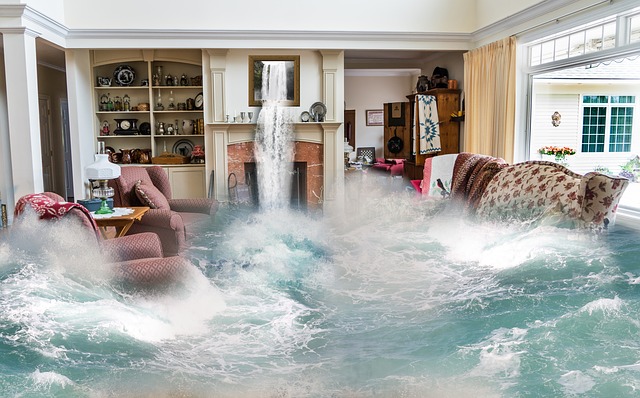Home Warranty > Home Tips For Homeowners
Do Home Warranties Cover Pools? Plus! Tips to Winterize Your Pool the Right Way

Plus! Tips to Winterize Your Pool the Right Way
In the olden days, wearing white after Labor Day was a big no-no. Now, post-Labor Day is all about gearing up for fall, which means folding up your white jeans, but also closing up the backyard pool.
Just because splash fights and afternoons of sun tanning are over for the summer, it doesn’t mean you can forget taking care of your home pool. Now, it’s time to winterize.
Winterization is all about protecting your pool. While this isn’t a daunting task, preparing a pool for winter looks different for everyone. Leaving your pool open all year may depend on where you live. If you expect freezing temperatures, snow, and/or sleet, closing the pool during the cold months is the best idea.
Follow this checklist to ensure your pool is closed up properly:
1. Balance the Chemicals.
First things first. Make sure the pH, chlorine, and total alkaline levels are stable. Tackling this step now will save you the headache (and the expenses!) of balancing the pool’s chemical levels come springtime.
2. Blow Pool Lines.
One of the most common reasons a pool owner closes their pool is to take care of the pool’s equipment. Freezing temperatures could destroy lines with water still inside. Use a shop vac to blow pool lines from the skimmer through the equipment back into the pool and close any openings with freeze plugs. Pumps, filters, heaters, and chlorinators should all be drained.
If you leave your pool open, include freeze protections, like a timer and a heater that will kick on as soon as temperatures reach a certain point. Running a pool pump to keep water flowing constantly will also keep your pool lines from freezing and your pool pipes from bursting.
3. Manage Water Levels.
This is a common question pool owners ask: Do I have to drain my pool for winter?
You may think an empty pool is a safe pool, but don’t trust your initial instincts.
“Many think you’re supposed to drain the pool during the winter months, but completely draining a pool can dry out the liners and expose the pool’s surface to damage from debris,” Joseph Shrem, President of Select Home Warranty, said.
In preparation for winter, Shrem suggests only draining the pool to below the level of the skimmer and the jets. “This way,” he said, “all the water gets out of the plumbing lines and won’t freeze and crack the pipes.”
Select Home Warranty offers home warranty coverage plans that include in-ground pools. “This way you can have peace of mind all year,” Shrem said, “and be ready to enjoy your swimming pool as soon as winter ends.”
4. Cover Your Pool.
Investing in pool safety covers, mesh covers, or winter-specific pool covers is a homeowner’s choice. Cost analysis is a valid exercise. Is the cost of running the pool in winter (chemicals, electricity, and labor) more or less than the cost of a pool cover?
Another aspect to consider is this: by spring, the homeowners who covered their swimming pools in winter will battle algal growth. This natural phenomenon requires time and includes expenses as you balance out the levels again in your swimming pool.
Do Home Warranties Cover Pools?
Most home warranty companies, like Fidelity National Home Warranty and Blue Ribbon Home Warranty, offer additional pool and spa coverage. Through American Home Shield, the Appliances, Systems, Combo, and Build-Your-Own Plan each have options for spa and pool coverage. Since pools and spas are complex, coverage may not include all parts and components of your pool system. This is where it’s important to do your research and ensure your pool and its components are covered the way you’d like them to be.
Through Choice Home Warranty, “both pool and built-in spa equipment (exterior hot tub and whirlpool) are covered with optional coverage if they utilize common equipment. If they do not utilize common equipment, then only one or the other is covered unless an additional fee is paid.”
Generally, covered parts and components include pool sweep, motor pumps, blower motors, blower timers, plumbing pipes, and electrical. Excluded elements include portable or above-ground spas, lights, liners, jets, ornamental fountains, waterfalls, or heat pumps.
The Final Clean Pool Checklist
If you’re a homeowner wanting to keep your pool open for winter, continue to:
- Maintain the pool
- Balance your pool water regularly
- Clean your pool filter
- Care for pool equipment
- Store any floats, toys, ladders, or diving boards
- Scrub your pool walls
- Remove leaves and debris from pool surface
By following these steps, you’ll be all ready to cannonball back into your family’s pool by the time the weather warms up again next year.


